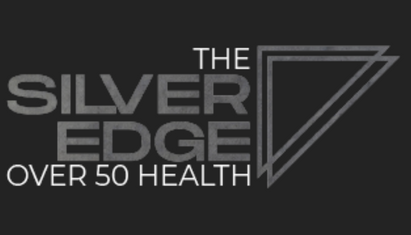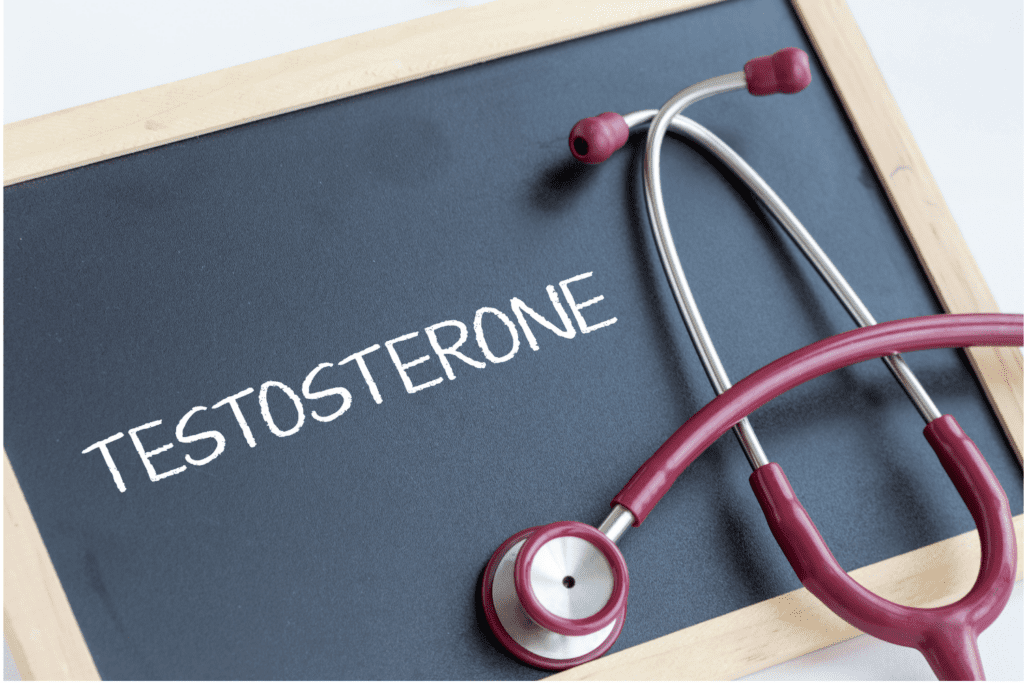
I more than doubled my testosterone levels naturally in my forties, utilizing lifestyle changes. But before we get into that, let me tell you a bit of my story. Through most of my thirties and into my early forties I was active, primarily with endurance training and events. During that time I completed six marathons, two half Ironman triathlons, and numerous shorter triathlons and shorter road races (ranging from 5Ks to half marathons). I was quite skinny but considered myself to be fit, and my nutrition during these years consisted mainly of carbohydrates without much distinction between nutrient density and downright unhealthy foods.
Fast forward a few years and I burned out on endurance events. I disliked biking (which I was doing a lot of), and in general was growing tired of every weekend being consumed with races or long grueling workouts. So I stopped. Altogether. Up until this time I felt healthy, but a slow insidious change began to take place. My nutrition wasn’t great up to this point, but I got away with it because I was simply burning calories as fast as I could eat them. But now my diet remained more or less the same, except I wasn’t burning all of those calories. I suppose the loss of exercise left a hole in my life and I had a good part of my identity wrapped up in considering myself a runner and triathlete. I started drinking more. Make no mistake, I was drinking while I was exercising, but there were some self-limiting checks built in to my lifestyle (who wants to do a 6am 15 mile long run hungover?).
Outwardly things didn’t look so bad… my career was high flying, I wasn’t obese, I had a beautiful wife, two amazing kids, a big house, and a fancy car. But something wasn’t right. I packed a few pounds on around my midsection (while staying quite skinny everywhere else), and I started to get sick more. Nothing major, just more colds, random aches and pains, and in general feeling run down and lethargic. And then something very scary happened… my libido took a nose dive, eventually resulting in full-blown erectile dysfunction. I was horrified and embarrassed, and in a panic I made an appointment with my doctor.
My doctor did a bunch of blood work to rule out anything horrible. I told him that this condition had come on suddenly and without warning, although looking back now I see I was headed down this path for some time. We did a blood test to check my testosterone, and sure enough it was bottomed out. A testosterone level below 300 nanograms per deciliter (ng/dl) is considered low, and my test came back at 280 ng/dl. I’ll give my physician full credit here, he did tell me that with lifestyle changes I could bring those numbers up. But I felt like his guidance was vague (exercise and improve my nutrition), and I was in a full-blown panic… I’d lost my mojo and I wanted it back immediately.
So I got a referral to a urologist, who was more than happy to write me a prescription for both Viagra and Cialis (so I could see which one worked best for me). The urologist was also quick to recommend hormone replacement therapy (HRT), which I immediately and gratefully took him up on. No real discussions of root causes or correcting the underlying issues, just a quick-fix “solution.” But I jumped on it… and it worked. I was sent home with a prescription for a bunch of syringes and some synthetic testosterone and told to go back to enjoying life. And I did, for a while. My sex life improved, my energy was back, and I felt like I finally had my mojo back. But a few months later I was back at a follow up appointment with my regular doctor, and he painted a not-so-pretty picture for me. I was about 45 years old at the time, and he asked me very bluntly if I planned on giving myself an injection every week for the rest of my life. He said if I lived to be 85, that would be 40 years of weekly injections. He went on to explain that the human body is an amazing machine, and that if I continued down the path of weekly injections, at some point I’d pass the point of no return; meaning my body would stop making its own testosterone.
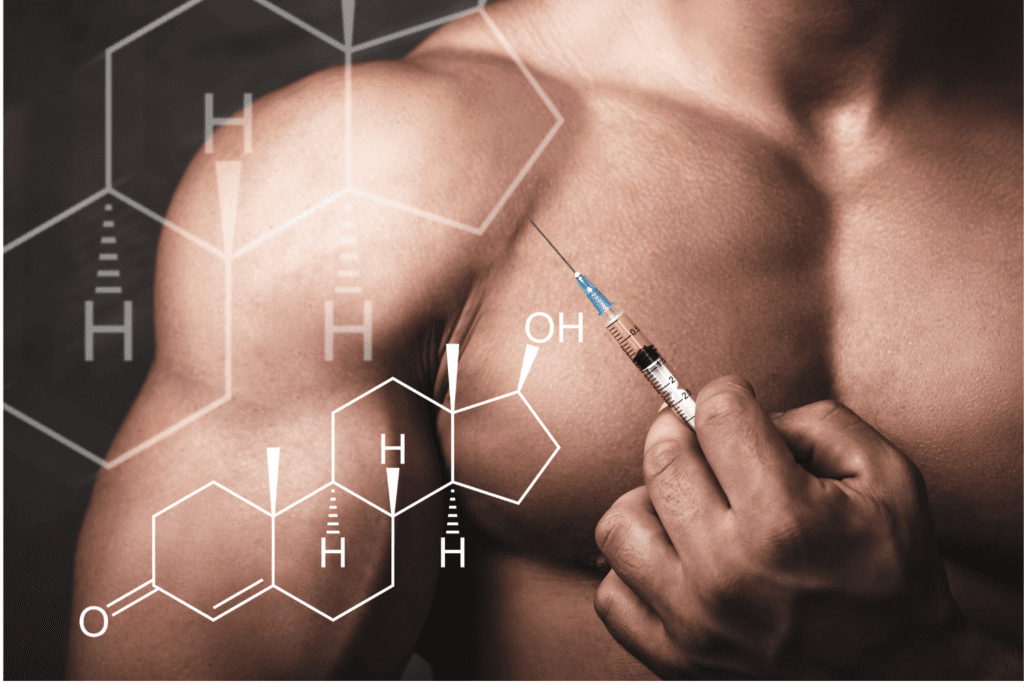
Now I was alarmed, I really hadn’t stopped to consider long term implications. I just knew my sex life was back to normal and I felt reasonably good. He encouraged me to stop the testosterone treatments for a while and see what happened. Reluctantly I agreed. And immediately spiraled downward. But it was at this point that I started doing some research on my own. Up to now I hadn’t seriously considered that my low testosterone was a result of the crappy life choices I was making. In my mind it was a medical issue, and that meant I needed medicine to fix the problem… right?
All told it probably took me two years of intensive research and self-experimentation to get back to natural healthy testosterone levels (above 500 ng/dl). I went back on HRT one more time for a couple of months, and then finally weaned myself off for good. As it turns out the answer wasn’t overly complex, but rather was a series of common-sense lifestyle changes that had a dramatic effect on my overall health.
At this point a disclaimer is in order. I am not a medical doctor, I have no medical training and nothing in this blog post should be construed as medical advice. This is a recounting of my personal experience outlining my battle with low testosterone and how I was able to naturally raise my levels.
By now you may be thinking, “good grief, just tell me what you did already!” Or maybe you skipped the intro sob story and came straight here. Either way, here are the steps that I took to naturally increase my testosterone (in order of importance), and still practice to this day.
UPGRADE YOUR WORKOUT
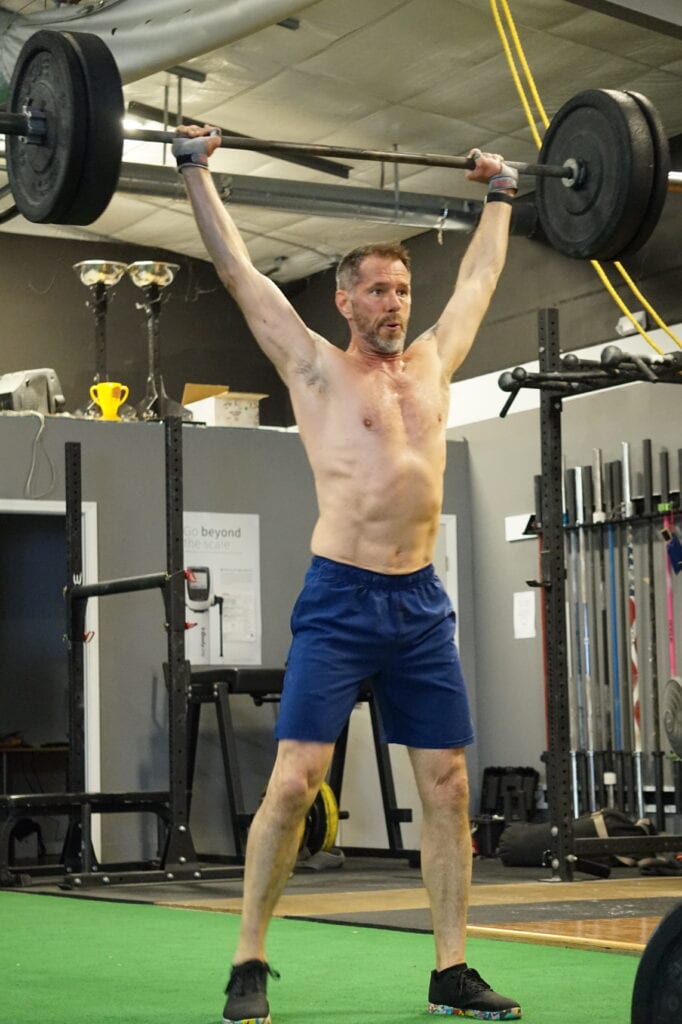
This is probably the number one change I made to increase my hormonal health. I can’t over-emphasize how important this was for me. Up until this point in my life I had zero strength training. None, zip, nada. Tons of long (mostly slow) cardio, but I never worked on strength. To be honest, this step took years. I joined a globo gym early on but was lost. My early days were spent wandering aimlessly from machine to machine doing what I saw other members do, but had no real plan whatsoever. I eventually graduated to finding some workout routines on bodybuilding.com and in men’s fitness magazines, and floated from program to program. But the real change came when I found an article on 5×5 strength training. The basic gist of the article was that if you wanted to get strong, you should do 5 sets of 5 reps of a couple of very basic exercises: namely the deadlift, the squat, the bench press, and the overhead press.
If you suffer from low testosterone I’d start right here. Find a gym – preferably a strength focused gym – and get started on a sensible strength program featuring progressive overloading of these basic compound movements. If you’re unfamiliar with these lifts you’ll want to seriously consider hiring a knowledgeable trainer (please know that the fitness world is full of “experts” who are NOT qualified to teach these lifts, do your research). I’d also strongly recommend the following books:
Starting Strength: Basic Barbell Training by Mark Rippetoe
The Barbell Prescription: Strength Training for Life After 40 by Dr. Jonathon Sullivan & Andy Baker
Bigger Leaner Stronger: The Simple Science of Building the Ultimate Male Body by Michael Matthews
Once you have a good foundational strength program started, you’ll want to consider some type of high intensity cardio training. HIIT (high intensity interval training) is a cardiovascular exercise strategy that alternates short periods of intense anaerobic exercise with less intense recovery periods. This can be anything from repeated sprints to complicated routines involving a number of different intense activities.
For you endurance men out there, if you’ve read this far I’m assuming you have testosterone concerns. There’s mounting evidence that suggests that long cardio sessions adversely affect testosterone levels. If you’re unwilling to give up your marathons/triathlons/biking, etc. you’ll want to seriously consider adding in some weight training.
Simply put, more muscle mass (especially in relation to body fat) means more testosterone.
UPGRADE YOUR NUTRITION
Number two on this list is consuming a well-balanced, nutrient-dense diet. At a very high level this means getting rid of as many processed foods as possible and replacing them with whole foods. Let’s start our discussion on diet with calorie balance, which is a factor of how much energy you intake via food versus how much energy you expend via movement. Both under eating and over eating – being too thin (under-muscled) or overweight (too much body fay) – will adversely affect your testosterone. The trick here is to eat enough calories to support muscle gain, but not so many that you store additional calories as fat. If you’re not sure how many calories you’re currently burning today, google “daily caloric expenditure calculator.” There are numerous online calculators that provide an estimate of the total amount of calories that you burn during an average day, you simply input your age, weight, height and activity level and the calculator spits out an estimated number of daily calories you expend. Keep in mind that this number is just an estimate, but it’s a good starting place. If you’re trying to lose weight, you’ll need to consume fewer calories than your daily expenditure and the opposite is true if you’re trying to gain weight. A good starting place is to add or subtract 200 calories a day for sustainable weight gain or loss, and we’re looking for a .5 to 1 pound a week loss/gain. Any more than this may be too aggressive and actually hinder your hormonal health (the exception being if you’re very obese).
Keep in mind that the goal of our fueling strategy isn’t to gain or lose weight, but rather to lose fat and gain muscle. Now we have an idea of how much we should eat, let’s turn our attention to what we should eat to optimize testosterone. Below are the strategies I used that gave me the biggest bang for my hormonal buck.
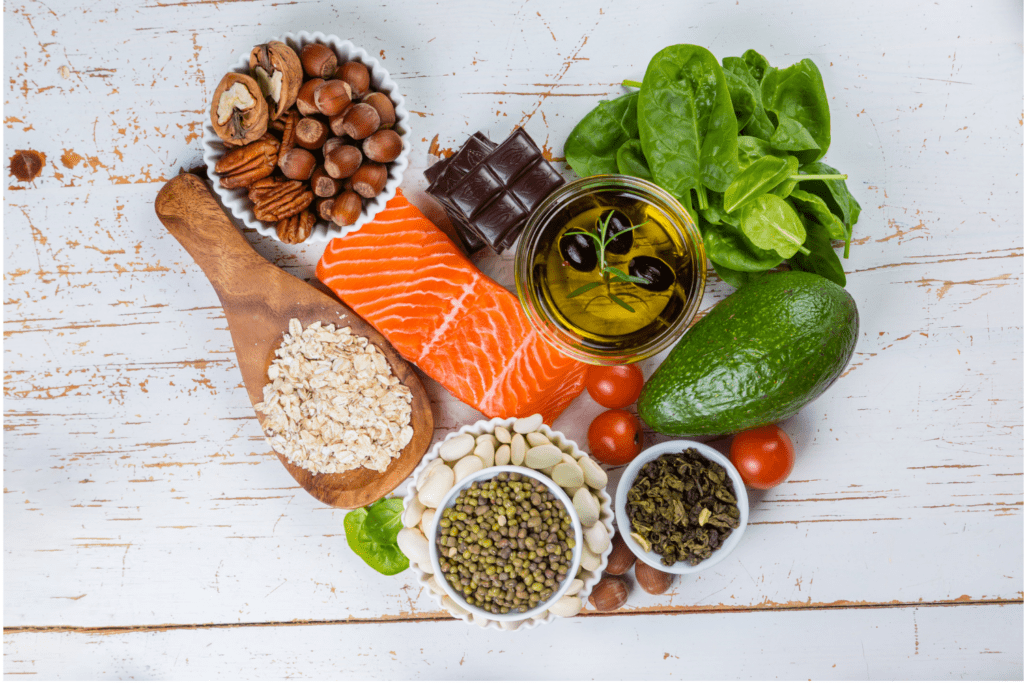
1. Eat Whole Foods – as mentioned earlier one of the best ways to increase your overall health is to eat more whole foods. Whole foods are any food without an ingredient label; think meats, produce, nuts and seeds, etc. One common tip to help ensure you’re eating more whole foods to “shop the perimeter” of the grocery store. This means starting at the produce section and making your way around the store – visiting the meat, dairy, and egg sections – but avoiding the inner aisles. You’ll need some things from the center of the store, such as oils, nuts, and other ingredients, but the general idea is to avoid as many processed foods as possible… most are calorie rich and nutrient poor, and many contain unwanted preservatives, additives, artificial coloring, etc.
2. Prioritize Protein – we’ve already determined that building up our testosterone is going to require adding additional muscle mass, but we’ll need to feed those muscles to make them grow. While carbs and fat are both important for healthy hormones, we should prioritize getting enough quality protein. When I started my personal testosterone building journey, I was shocked at how little protein I was eating. I spent years focusing on carbohydrates to fuel my endurance exercise, and never gave much thought to protein. Then I stumbled on the rule of “eat one gram of protein per pound of body weight.” My weight back then was probably 185-ish, so 185 grams of protein equals about 740 daily calories from protein, and I probably wasn’t eating even half that much. Try to vary your protein sources, seafood seems to be testosterone superfood, other good choices are eggs, chicken, beef, dairy, lean pork, and beans. Start with 1 gram of protein per pound of body weight. The exception to this rule is if you are obese, in which case you should scale that to 1 gram of protein per pound of desired body weight.
3. Clean Up Your Carbohydrates – poor carbs, they seem to have fallen out of favor lately. From Adkins diet to Keto, carbs have been demonized in the last ten years or so. Here’s the main problem with I see with carbohydrates: most of the carbs we’re eating are from nutrient poor, highly processed foods. Nobody is getting obese or unhealthy because they are including sweet potatoes, oatmeal, beans and lentils, vegetables, or even oft-maligned fruit in their diet. Many of the carbs we eat are promoted as healthy, such as sweetened sports drinks, cereals and cereal bars, protein bars (most are just candy bars in disguise), fruit juices, etc. Try to avoid foods with added sugar and flour and stick to some of the healthy suggestions above. In terms of how many carbs, a good starting place might be 1.5 grams of carbohydrates per pound of body weight.
4. Eat Healthy Fats – if you’re over 50, you’ve live through the low-fat craze from the seventies and eighties. Much like carbohydrates have been demonized in recent times, the culprit of obesity in decades past was definitely fat. Multiple studies have shown that low fat diets in men is positively correlated with low testosterone. The bottom line is you need healthy fats for both hormone and brain health. In terms of building up testosterone, your best bet is to prioritize monounsaturated fats (extra-virgin olive oil, avocados, nuts, seeds, etc.), eat polyunsaturated fats in moderation (fatty fish such as salmon and mackerel, sunflower oil, safflower oil, etc.), limit saturated fats (butter, bacon, etc.) and avoid trans fats as much as possible (hydrogenated and partially hydrogenated oils – note that these are in many processed and restaurant foods). A good starting place here would be to shoot for .4 grams of healthy fat per pound of body weight.
5. Find What Works for You – I realize that’s a lot of info and nutrition can be confusing. The simple take away is to clean up your diet and eat health promoting foods. If you’re not already counting your macros (proteins, carbs, and fats), consider using an app like MyFitnessPal. A reasonable place to start would be to find your desired daily caloric intake, and shoot for 40% from carbohydrates, 30% from protein and 30% from healthy fats. Try that for 30 days and then tweak as needed.
6. Ditch the Alcohol – sorry to be the bearer of bad news, but when it comes to hormonal health alcohol is not your friend. If you’re serious about improving testosterone, consider eliminating or greatly reducing your alcohol intake.
IMPROVE YOUR SLEEP
Sleep makes everything better! Seriously… everything. The highest levels of testosterone production occur while we’re sleeping. Getting quality sleep can help us gain muscle, lose fat, regulate blood sugar, regulate hormones, and regulate our hunger, appetite and satiety… and the exact opposite happens when we don’t get sufficient sleep. We all know that feeling of waking up refreshed and ready to take on the world after a good night’s sleep… and we all know that feeling of lethargy and muddle-headedness that comes from a lousy night’s sleep. Here are a few tips that worked for me:
· Ditch the electronics an hour before bedtime. If you absolutely can’t do this, get some decent blue blocking glasses and wear them for an hour before bed.
· Try to go to bed at the same time every night.
· Keep your bedroom dark and cool at night.
· Establish a bedtime ritual. I personally have a short prayer/gratitude practice that I do every night before falling asleep.
DETOX YOUR ENVIRONMENT
It turns out that many of the products we take for granted in our homes and workplace are wreaking havoc on our hormonal health. Endocrine disruptors are a category of chemicals that alter the normal function of hormones (not good), and xenoestrogens are a sub-category of endocrine disruptors that specifically have estrogen-like effects (really, really not good). When men are exposed to too much of these estrogen-imitating chemicals, our testosterone levels take a nose dive. And if that’s not bad enough, xenoestrogens are everywhere. They are in our shampoo, shaving cream, underarm deodorant, soap, toothpaste, laundry detergent and dryer sheets; they are in colognes and sunscreens; they are in plastics, bleach, insecticides, and herbicides; they are in food additives and colorings; they are hidden in our furniture, carpets, drapes, bedding, and mattresses; heck, it’s even in our treated (chlorinated) water.
Here are a few of the steps that I took to detox my environment that I feel had the greatest impact.
· Ditch the plastic. This is a tough one because plastics are ubiquitous. Swap out your BPA free water bottle for a metal container. Try to use glass storage containers and avoid sandwich baggies and plastic wrap for food storage. Never microwave anything in plastic. Avoid non-stick pans.
· Buy (or make) natural personal care products, including soap, shampoo, shaving cream, underarm deodorant, cologne, hair gel, and toothpaste. Be very careful shopping for “natural” products, savvy marketers have caught on that we consumers want chemical free products, and many products marketed as “all-natural” are not in fact endocrine-disruptor free. I personal use products by Living Libations for all my personal hygiene.
· Buy (or make) natural cleaning products. This includes dish soap, laundry detergent, dryer sheets, bleach, and household cleaners. Avoid anything that has a perfume or scent added and completely skip those chemical laden plug-in home air fresheners (try essential oil diffusers or incense instead).
· Get a water filter for your sink and for your shower. Recent studies have suggested that bathing in warm/hot chlorinated water is worse than drinking it.
· Buy organic food whenever possible. Chemically grown food is loaded with xenoestrogenic pesticides, insecticides and herbicides.
· Consider replacing your bedding. Conventional cotton is heavily sprayed with pesticides, so consider swapping out for organic fair-trade cotton, natural linen, wild organic silk, bamboo, or hemp.
REDUCE STRESS
We all know stress – especially chronic stress – is bad for our overall health. But high stress levels have a negative impact on testosterone levels in men, and this in turn can produce additional stress, creating a vicious downward spiral. In addition, stress can affect other areas of our lives that lead to lower testosterone, such as poor diet, poor sleep, increased alcohol consumption, and lack of motivation to exercise. Consider incorporating some type of stress reducing activities into your everyday life. I found both journaling and meditation powerful stress reducers. Just a few minutes each morning before my day starts and and things get hectic are enough to make a big difference. I’ll also take a “breathing break” when I feel my stress level rising. This is simply taking a few slow deep breaths; I take a full inhale and then slowly (over 5-8 seconds) exhale. But my main stress reliever is my exercise… I’m double-dipping in the testosterone boosting activities!

EMBRACE MASCULINITY
This may seem a bit woo-woo compared to the tips above, but I’ve personally found this practice to be helpful. In our increasingly feminized society masculinity is often frowned upon… and I’m not even talking about so-called “toxic masculinity.” By embracing masculinity, I mean doing manly things and adopting masculine virtues such as grit, toughness, dominance, aggression and strength. Take charge of situations, be a leader in your home and in your community. Be decisive and direct. Find ways to compete and try hard to win. Reconnect with nature (you are an animal after all). Be courageous, do hard things. Reclaim your “primal-ness.” This will be different for everyone… but be a man. A couple of books that I found insightful and thought-provoking on this topic were:
No More Mr. Nice Guy by Dr. Robert Glover
The Way of Men by Jack Donovan
HAVE MORE SEX
Finally we get to a topic I believe we can all heartily endorse! Studies have shown that having sex increases testosterone production (although the same in not true for masturbation). Initiate sex, and have sex more often. This is the opposite of the downward spiral: the more sex we have, the higher our testosterone levels, which increases our sex drive.
SUPPLEMENTATION
I intentionally left this topic until last, although this is the first area I researched, and I spent a great deal of energy and time trying to find the “magic elixir,” it was the least effective of the strategies I employed. I was convinced that if I found the right supplement – or the sight supplement stack – that all my low T woes would be over. This was not my experience. With low testosterone being on the rise – even in younger men – the market is flooded with all sorts of “T Booster” supplements as well as the more traditional remedies such as ginseng and horny goat weed. It looks like the research backs up my own personal experience… most of these seem to be ineffective at long term testosterone increases and a waste of money (these supplements are not inexpensive).
The one exception to this rule may not be one you were expecting. It’s pine pollen, specifically pine pollen in its tinctured form (I make my own). Pine pollen has numerous purported health benefits, but for our purposes here I’ll quote Stephen Harrod: pine pollen is a “potent overall tonic to the body and its functioning, a powerful nutritive, and an exceptionally effective androgen which raises testosterone levels in the blood and balances the androgen/estrogen ratio.” To learn everything you ever wanted to know (and then some), check out the booklet titled Pine Pollen: Ancient Medicine for a New Millennium by Stephen Harrod Buhner. You can find it on Amazon for Kindle.
The other two supplements worth mentioning are Zinc and Vitamin D (which is actually a hormone), primarily because these two seem to come up quite often in the low testosterone conversation. My personal advice would be to get your levels checked to see if you are deficient in either. But perhaps before jumping on the supplement bandwagon, try natural strategies to increase these levels. For Zinc try adding more seafood (especially oysters) and red meat to your diet. For Vitamin D try to get healthy sun exposure (read more on healthy sun exposure HERE).
SUMMARY
In summary there’s good news and bad news for men with low testosterone. The good news is that many men over 50 can naturally raise their testosterone levels without resorting to hormone replacement therapy or the need for pharmaceuticals (Viagra, Cialis, etc.). The bad news is that it’s going to require changes to your current lifestyle which take time and effort. As someone who’s been down both paths – the medical and the natural – I can tell you that I am much happier with the lifestyle changes I’ve made. Testosterone injections and Viagra might make you feel better in the short term, but they are palliative at best; they do NOTHING to treat the root cause. If you are a man over 50 considering (or maybe already down the path of) hormone replacement therapy, my advice would be to work with your doctor and make sure you’ve done everything possible to clean up your lifestyle and optimize your testosterone levels naturally.
I’d love to hear from others who have experience with low testosterone. What do you think? What measures have you tried that worked for you?
